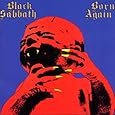Every week, the AAII solicits a survey from its members about how they feel about the market that week - bullish, bearish, or neutral. Then they publish the percentages of each of those numbers on their website in time for trading on the open on Thursday morning. Long-term analysis has shown that these respondents get more bullish the higher the market goes, regardless of other factors, and they get less bullish the lower the market goes.
My own back-testing indicates that there is a significant skew to the results, which I think is best explained in the psychological terms of a typical "amateur" investor. Having been burned before, this investor remains bearish or neutral until the market is so strong that he can no longer deny its strength. Then he flip-flops his opinion, deciding that it's a bull market after all, and buys shares. As the market rises and falls, he is unable to separate himself from his position, rationalizing his losing days and patting himself on the back for his winning days - despite being a passive holder of shares who didn't really do anything. When the market enters a downtrend, he continues rationalizing his position longer than he should, telling himself it's okay because "it's a long-term trade," or "it's a minor correction," or "they're just shaking out the weak hands." He remains bullish until the moment of capitulation, finally selling his shares in despair.
This is a classic investing behavior that is driven by the sunk-cost fallacy. This dilemma is usually explained in terms of movie tickets: you bought the tickets, but the movie sucks and you want to leave. But you don't leave, hoping against all odds that it will get better, because you don't want to "waste" the price of the ticket. While this example is very easy to understand, and most of us have experienced it directly, it doesn't map perfectly to an investing situation. So let me attempt to redraw it.
You bought shares in a company, excited because you felt that they were developing the next great product sure to be on everyone's list during the Holidays, and you reckoned the stock was under-priced. Unbeknownst to you, the management team was running the company into the ground by taking crippling salaries and under-funding research and marketing. For months, the stock slid steadily lower for no apparent reason. Your initial investment fell by 10%, then 20%, then 30%. Every month, you reviewed your holdings and couldn't bring yourself to sell, because:
- Rationalization: Maybe when that new product comes out, things will be different. Rebuttal: What was your target return on that product at the beginning? 20%? 40%? What kind of a return do you need to get now just to get even?
- Rationalization: If you sell now, you'll never make the money back that you've lost. Rebuttal: If you sell now, you can invest in something else with a higher probability of return, enhancing your chances of profiting from now on.
- Rationalization: You bought this company because you felt it was under-priced. Now it's an even better bargain! Rebuttal: Imagine how great a bargain it will be when it goes bankrupt.
Does any of this sound familiar? I'm not immune: I bought Yahoo in 2000 for $100, $80, and again at $40 before I finally capitulated and sold at $20. That sure was a good tax write-off. But I digress.
This psychology is important to CS|MACO because the trade seeks to get long when the typical investor described above finally gives up and dumps his shares in despair. This is the moment of capitulation, and it generally marks the bottom of a correction in the market. Because most individuals are long-only investors, using the inverse doesn't work so well: it makes no sense to get short when everyone is exuberantly bullish. Also, long-term up-trends are much more common than long-term down-trends - market corrections tend to be much faster and more violent because of the pain-avoidance behavior described above.
Since long-term up-trends involve ever-higher bullishness on the part of investors, it is frequently the case that the AAII survey gets so bullish that CS|MACO gets an exit-long signal long before the end of the trend. The MACO component compensates for these premature exits by keeping the trade long as long as the daily close price is higher than the 200-day moving average, and the 200-day moving average is itself higher than the 300-day moving average.
As a matter of fact, the rally that SPY has been enjoying since its low on October 4 is very close to reaching that 200-day moving average. So with a little more buying and a little less bullishness (aka irrational exuberance), CS|MACO might find itself right back in that position.
So how did it do this time around? Including dividends, it's a 3% return. It's not a tremendously exciting strategy.














